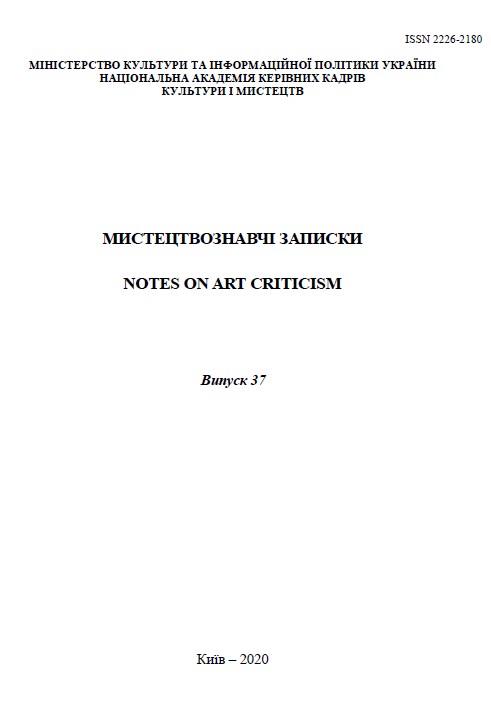ПОСТДРАМАТИЧНИЙ ТЕАТР ЯНА ФАБРА
POST-DRAMATIC THEATER BY JANA FABRЕ
Author(s): Iryna Vitaliyivna Ivashchenko, Victorya Oleksandrivna StrelchukSubject(s): Theatre, Dance, Performing Arts, Transformation Period (1990 - 2010), Present Times (2010 - today)
Published by: Національна академія керівних кадрів культури і мистецтв
Keywords: post-dramatic theater; J. Fabre; performance; physicality; contemporary theater art;
Summary/Abstract: The purpose of the article is to reveal the specifics of J. Fabre's theatrical productions in the context of the development of post-dramatic art. Methodology. A set of methods of contemporary art criticism was applied, aimed at understanding Jan Fabre's theatrical activity in the context of the evolution of post-dramatic art: a biographical method (aimed at illuminating features of the artist's creative path); typological (to determine the features of J. Fabre's directorial vocabulary); method of image-stylistic and artistic-compositional analysis of the performance (to identify and theoretically substantiate the specifics of the production of the Belgian director), etc. Scientific novelty. The creative activity of the Belgian theater director, visual artist, choreographer, and playwright Jan Fabre in the context of the peculiarities of the development of post-dramatic art has been investigated; on the basis of the art analysis of stage productions "The power of theatrical madness," "This is a theater," "Theater Recorded with K." (1987–1993), "I Blood" (2001), "The History of Tears" (2005), "The King of Plagiarism" (2005), "Requiem for Metamorphosis" (2007), " The Orgy of Tolerance” (2009) and “Mount Olympus” (2015) revealed the peculiarities of the author's approach in theoretical understanding and practical implementation of the concept of post-dramatic theater; Methods of the director's activity and artistic and aesthetic views of J. Fabre are considered and analyzed. Conclusions. The study found that, according to the concept of the J. Fabre Theater, the human body is in the spotlight - he is experimenting and watching how the actor's body reacts in different situations. For example, patterns typical of his plays are patterns (schematics acting as a narrative or sensual concept, through which the patterns of their existence in nature and society are revealed in the process of simultaneous perception and thought), which are repeated. Typical of J. Fabre's theatrical productions is the use of constantly repeated movements, the creation of unpleasant and/or painful sensations that affect both the actors and the audience, as well as the violation of the storyline and cooperation with non-professional actors and dancers.
Journal: Мистецтвознавчі записки
- Issue Year: 2020
- Issue No: 37
- Page Range: 218-222
- Page Count: 5
- Language: Ukrainian

